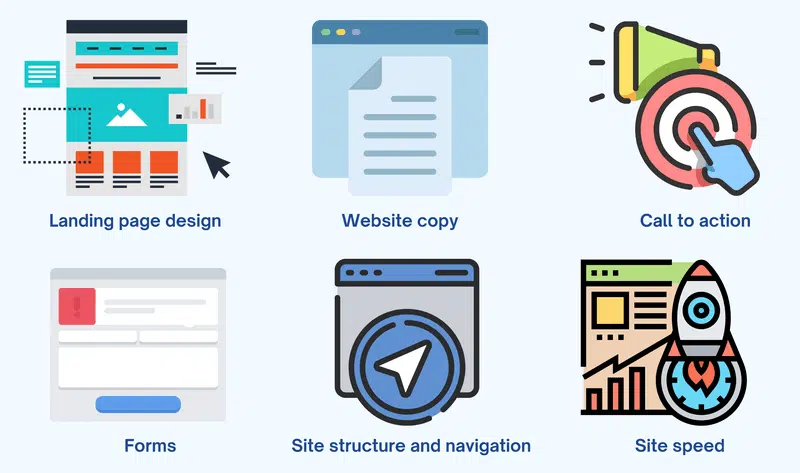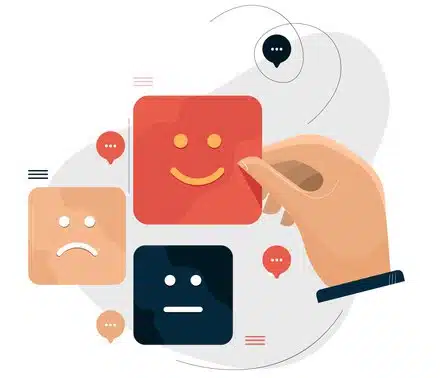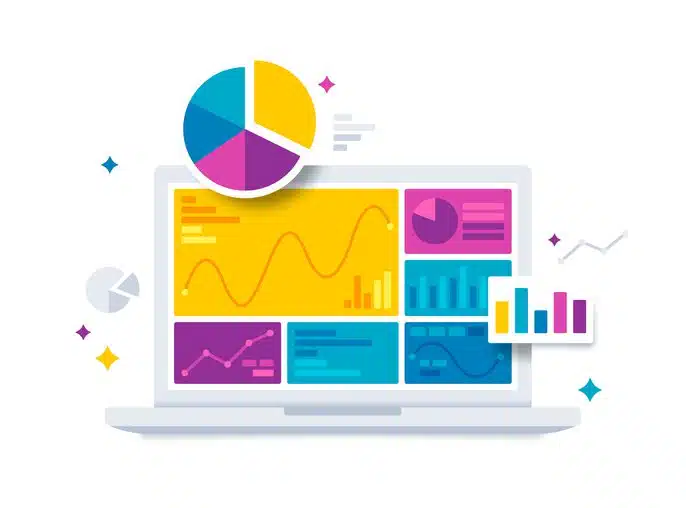You have decided to start a business. It has an online presence (Of course it has, it’s 2022!) You have impressive website traffic metrics. But, all this is not translating into profits for your business. Not to worry, we at Totempool are here to save the day! This article shall cover all that you need to know about CRO marketing.
There are a couple of aspects to online marketing – driving traffic to your website and converting most of the traffic into leads is one. That’s where CRO marketing comes into play.
It drives your business towards sustainable growth. Unlocking the power of CRO should be the ultimate focus of your business, and this article will help you in that journey.
What is CRO?
CRO stands for Conversion Rate Optimization. It refers to the process of optimizing your website or landing page experience so that there is a greater probability of visitors completing the desired actions. CRO matters because it helps optimize the marketing team’s efforts.
Firstly, it is essential to understand that conversion means different things depending on the context. Some examples of conversions are:
- Signing up to receive content such as marketing emails.
- Submitting contact information such as email address.
- Downloading content such as whitepapers or reports.
- Upgrading their subscription plan.
What is CRO Marketing?

CRO marketing is a detailed process that involves the fine-tuning of various elements. In this section, let us take an in-depth look at these elements and how they are optimized.
The main elements of CRO marketing are:
- Landing page design
- Copy
- Call to action
- Forms
- Site structure and navigation
- Site speed
Let’s talk about each of these elements.
Landing Page Design
This is the primary element that decides the success of the website. Landing pages are pages designed so that the user takes action.
Moreover, a landing page is often the leading destination of a CRO marketing campaign. So it must come outright. Also, here are some critical elements of a quality landing page:
- A main and a supporting headline
- Unique selling proposition
- Benefits for the end-user
- High-quality media such as photos or videos
- Social proof
- Persuading statements
- A call to action.
So limiting the number of possible user actions along with clearly articulating the value that the user will get from the product or service is the best way to optimize a landing page.
Website Copy
A good and pleasing design will not get your business the desired results without a proper website copy. So words are indeed necessary!
Furthermore, words possess the magic to captivate your website audience and convert them into leads. So they play a crucial role in the CRO marketing process.
There is a structured approach to writing good website copy like everything else. And explained below are the ingredients of good website copy:
Headlines – should be catchy, direct, and in the question form to intrigue the user.
Main content body – should be well-formatted. Also, the tone of the content should be written with the target audience in mind. Your brand’s personality should stand out, and the answer to – “What is in it for the user” must be clear as daylight.
Call to Action
A CTA or Call to Action is a request to customers to perform the desired action. The action could be anything – from purchasing to filling a form. The CTA should provide some immediate benefit to the user to incentivize him to act.
Forms
They are a crucial cog of the entire CRO marketing process. A well-made form can mean all the differences when it comes to conversions.
A good form maintains a high ratio between the quality of leads and the volume of leads. Another essential feature to remember is that the more concise the form, the better it performs. Lead generation forms on platforms such as LinkedIn can also be auto-populated.
Site Structure and Navigation
A site’s structure must be easy to understand and easy to navigate. Basically, site structure can be defined as a graph of how different site pages interact with one another.
A site typically starts with a homepage. A user can explore the various categories and subcategories until he reaches the desired page. An efficient site makes sure that the user reaches the landing page in the fewest clicks possible and also completes an action.
Site Speed
The page loading time has a significant impact on the number of conversations. According to a Semrush blog, if a website loads in 1.7 seconds, it is faster than 75% of the web. If it loads in 0.8 seconds, it is faster than 94% of the web. Every second that your website takes to load loses your business thousands of dollars in revenue.
Important Notes for Successful Campaigns in CRO Marketing
This section will look at some of the critical steps while executing a CRO campaign.
Understand what drives people to your website.
Firstly, if you want to convert your website traffic into leads, you need to understand why people visit your website.
They could be reaching your website through a simple google search, a social media post, or similarly, through an Ad. Thus, it is imperative to get this information to create a customized experience for each of these distinct visitors.
It is important to treat each website visitor differently, depending on how he reached your website. So, always make an effort to find out or ask the audience directly. A form is a simple and elegant way to get this information.
Define top website personas and their requirements.

Website personas represent people who are most likely to visit your website. In addition, they also help you understand who your target segment is and what their need is.
You can get all the information you need. All you need to do is ask three questions on one of your most visited pages:
- How would you describe yourself in one sentence? (Helps in identifying the demographic)
- What’s the main reason for your visit today? (Helps in identifying the driver of the visit)
- What, if anything, is stopping you from taking that action today? (Helps in Identifying the barriers)
Find out where and why people leave your website.

Identifying high traffic exit pages can help you build your optimization efforts in the most opportune areas to improve in your CRO marketing. This can be done through Goal funnels or Conversion funnels in Google Analytics.
To build a funnel, start with the most important page to you and work backward. This way, you will include all the pages in the user journey. Once the data has been collected, you can see where the most significant drop-offs are.
The next step is to identify the sections on your drop-off pages where people face the most issues. This is to help you what people interact with last on your website just before dropping off.
Heat maps are a great way to identify the sections where people have stopped interacting with your pages. The redder the area, the more visitors it has received. Furthermore, if there are sharp changes of color between different sections of a page, that is where a majority of the visitors have dropped off.
So you can record peoples’ sessions on your website and notice their interactions with the different elements on the website. Examine their click and scroll maps in detail.
See if all the buttons can be clicked—test loading times on various devices. Also, check for any bugs and issues that the user might encounter.
Ask questions.

Set up simple 1-question surveys on high drop-off pages. These surveys should contain direct questions such as:
- What stopped you from taking <action name> today
- What is missing on the page
Next, you can work on addressing these concerns
Find what factors persuaded website visitors.
You have got website traffic, and they performed the desired action?. Great. Now it is time to find out the hooks that worked. This will help you identify the conversion-boosting elements of your website.
The way to do this is to set up a post-purchase survey. This should come up as soon as the customer sees the thank you page. Finally, it should contain questions such as:

- How would you rate your overall experience?
- What did you love most about the experience?
- The thing that you hated most about the experience?
- What almost prevented you from making a purchase?
Remember that to run CRO marketing successfully, and you will need to persuade your customer to take action.
Ask users about their fears or concerns.

A few days after the purchase. You can send an email to the customer with questions such as:
- What was your biggest worry before buying our product?
- What should we do to improve your experience in the future?
- How likely are you on a scale of 1-10 to recommend this website to a friend or colleague?
The answers to all the questions in this section will help you understand the main reasons why visitors are leaving your website.
Metrics in CRO Marketing

We have now established that CRO marketing is vital for your business. So, it becomes imperative to quantify its impact on the company. We are going to explore some CRO metrics in this section.
1. Conversion Rate
This is the most important of all metrics. One must understand that it does not suffice to get ‘N’ more conversions but get the ‘N’ more conversions from the ‘X’ traffic on the website. Simply put, the conversion rate is defined as the number of leads generated divided by the total web traffic *100.
Conversion Rate: (Number of leads / Number of webpage visits )* 100
2. Number of Net New Customers
The number of net new customers for your business is the net revenue goal divided by the average sales price.
Net New Customers: (Net Revenue Goal / Average Sales Price)
3. Lead Goal
To calculate the lead goal, one must divide the total number of customers and the lead to customer close rate percentage. The lead to customer close rate percentage is defined as the ratio of the total number of leads to the total number of customers.
Lead Goal: (Number of New Customers / Lead to Customer Close Rate Percentage)
4. Bounce Rate
Bounce rate is an important metric to show the visitors’ duration on the web page before leaving. One way to reduce the bounce rate for a particular page is to provide more information to proceed to the next step in his journey.
5. Time On-Site
This metric is otherwise known as average session duration. While there are no issues if the users spend too much time on a website, sometimes it points to the fact that there are browsing issues.
6. Pages Per Visit
You can analyze this metric along with the bounce rate and the average session duration. If the bounce rate is high, the pages per visit are low. And if the average session is high, the pages per visit are likely on the higher side.
The aim should be to enhance the overall user experience. This leads to more fills, product purchases, and other conversions.
7. New Vs. Returning Visitors
This is a metric that throws light on customer retention. When there is a returning visitor on a website, he is less likely to bounce off because he is already familiar with the brand. There must be enough compelling information about the offers for the new visitors to keep them on the site.
8. Devices
This parameter has gained priority over the last few years. This is because the use of hand-held devices has increased exponentially. The break-up of time spent on various devices can help your business. How you ask?. Well, you can prioritize optimization, UX, and offers on specific devices.
9. In-Page Analytics
This is a Google Analytics tool that will help you make the user experience smoother. You can find which sections on your website see the maximum activity.
Subsequently, you will understand the sections that are critical to the user. This will help in further optimizing the user experience.
10. Exit Percentage
This is a metric for those website visitors who have multiple pages. Many people tend to confuse this with bounce rate. But, the bounce rate calculates the percentage of those people who visited a particular web page and left the same page without visiting any other page.
The exit percentage helps us understand the user journey better. For instance, if many people exit the cart page, that is the page that needs to be optimized to increase the number of purchases.
11. Goal Funnel
We can set up goal funnels in the Conversions section of Google Analytics. They help us in reviewing where precisely the users are dropping off. The areas with the maximum drop-offs are the ones that need the most optimization.
12. Path Length
The Path Length tool is present under Multi-Channel Funnels. This is used to measure how users interact with our site and how long it takes them to convert. Further, the path length metric helps us in our retargeting strategy.
Also, we can provide a wonderful experience to the visitors returning to our website. The way to do this is to create a new landing page for them.
13. Acquisition
The acquisition overview section of Google Analytics tells us the website traffic sources. We can evaluate the traffic metrics for separate channels and create different user experiences on each channel.
14. Behavior Flow
This outlines the most common paths that the users take when they visit your website. Understanding behavior flow will help you make optimizations that eventually lead to more form fills.
How To Improve Your CRO Marketing With A/B Tests?
A/B testing is a vital part of any CRO marketing strategy because it allows marketers to make decisions based on data and not guesswork. However, there are still many marketers who haven’t embraced A/B testing despite knowing its importance.
Some don’t know where to start because they have no knowledge and skills in A/B testing, while others lack the time and resources to do the tests correctly.
This section of the article discusses what A/B testing is and the different elements you can start testing today to boost your website conversions and improve your CRO marketing.
What is A/B Testing, And How it Can Help Improve CRO Marketing Strategy?
A/B test is a process that involves showing two versions of one element to two groups of website visitors simultaneously to see which one performs best.
Think of A/B testing as a competition where you pit two versions of something against each other to determine the winner.
Knowing the variant that gets the highest conversions is crucial because it helps optimize your website for better results.
Website Elements You Should A/B Test to Support Your CRO Marketing Strategies
1) Copy
a) First vs. Second Person
One of the ways you can A/B test your copy is by writing the same copy in two different voices – one in the first person using I, we, me, and us, and the other in the second person using you, your, and yours.
Present them to your readers and see which version gets more engagement and conversions.
b) Long-form vs. Short-form Copy
You can also create two lengths of content- one long and the other one short, and present them to your audience simultaneously to see which one performs better.
It’s only through A/B testing that you’ll be able to know for sure if your target consumers prefer short-form content or long-form content.
c) Headline Copy
Your headline copy is another element you can test to see how it affects your conversions. Since it’s the first thing, your visitors see when they land on your site, you must know how to make it compelling.
One way to test it is by crafting one headline in the form of a statement and the other one in the form of a question and comparing their performance.
d) Statistics & Numbers
You can also test the statistics you add to your copy to make it look more credible. You can try using general numbers in one copy and specific numbers in another to find out what works best.
General numbers here are something like this, “We’ve gained over 2000 new clients in the last one month”, while specific numbers would read like this, “ We’ve gained 2175 new clients in the last month.”
2) Call-to-Action (CTA)
A call-to-action is a phrase that tells users the specific action you want them to take next after consuming your content.
There are different aspects of your CTA that you can test to see how they impact your overall conversions. These include background color, size, placement, text color, shape, and size.
Just make sure you A/B test one aspect at a time to know their actual impact on your results.
3) Email Subject lines
Also, how you write the subject lines of your emails directly impacts your open rates.
This is why you’re encouraged to A/B test different versions of your subject lines regularly to determine the winning version that will increase your open rate.
Testing ideas include writing one subject line in the form of a statement and the other in the form of a question, as well as testing different power words against each other.
Send one version to half of your subscribers and the other version to the remaining half to see what gets the highest open rate.
4) Images & Videos
There are different ideas for A/B testing images and videos. The first idea is to use images in one campaign and no image in another.
Secondly, you can use two different images in the same campaign to see how your audience responds to them.
Another idea is to use a static image in one campaign and a video in another to see what brings more conversions.
5) Font
The font is another important website element to test. Very tiny fonts can make your content extremely difficult to read, while larger fonts are more content scannable and attention-grabbing.
However, you can only know the most preferred font by your audience when you A/B test different font types, sizes, and weights to see how they perform.
6) Customer Testimonials
You can also experiment with customer testimonials by not including any testimonials in one campaign and adding a few testimonials in another to compare their performance.
Make sure you include the customers’ names, locations, photos, and job titles giving their testimonials to increase trust in your brand, products, and services.
7) Product Descriptions
Also, if you have an e-commerce website, you can test different versions of your product descriptions to determine the version that converts better.
You can write short and long product descriptions and test them against each other, or write one product description in paragraph form and another in bullets to see how they perform.
8) Landing Pages
The landing page is another website element worth testing. You can design two different versions of your landing page and give each design to a different audience group to find out how they perform in terms of clicks, traffic, and conversions.
The one that performs better should give you ideas on designing your landing pages in the future.
9) Customer Phone Number
You may or may not need your customers’ phone numbers depending on the type of business you’re in.
If you do, try testing to determine what happens to your conversion rate when you ask your customers to add their phone numbers when opting into your offer and when you don’t ask them to do so.
10) Discounts
Also, if you offer discounts on your e-commerce website, you can test different sizes to see how they impact your conversions.
For instance, you can offer a 10% discount and $20 off (of a $200 purchase) on certain products simultaneously to see which deal brings in more conversions.
11) Lead Magnets
You can also try changing the type of lead magnet you offer your audience to entice them to subscribe to your email list.
Try offering an e-book and a checklist or any other pair simultaneously to see which one drives more email subscriptions.
12) Countdown Timer
Also, suppose you usually add a countdown timer to your campaigns to create a sense of urgency.
In that case, you can put a countdown timer in a category page with a discounted price and no countdown on the same page for a different set of customers browsing to measure their performance and determine what leads to more conversions.
13) Scarcity on E-commerce Websites
Lastly, if you have an ongoing promotion on your e-commerce website where products can run out any time, you can write your copy in different ways to convey that message to your customers.
For instance, you can say something like, “Only 100 products left” in one version and “products are running out” in another version to see how they impact your conversions.
In Conclusion
Conversion Rate Optimization or CRO helps your business in several ways. It enhances revenue generation, augments value from existing customers, provides a better customer experience, and improves brand affinity and recall.
A/B testing is a technique that analyzes what’s working on your website. By collecting data on two different versions to achieve the same result, you can decide what will improve your website’s CRO.
This article explained CRO, CRO marketing strategies, its metrics, and the use of the A/B test to improve it. If you feel you are at this stage with your marketing and your website, take a closer look at this article and start implementing some of the proposed techniques. Enjoy!

Ranu Kumari is a Professional Writer and a Marketing enthusiast who currently runs her own Marketing Consultancy, LatitudeBOX. She has written promotional articles for multiple brands and has published her work in Scopus indexed journals. She is passionate about expressing her thoughts and ideas to connect with her readers in a voice that they understand.

Very interesting and instructive. Thanks for the great article
You’re Welcome!
Conversion Rate Optimization is essential to our business.